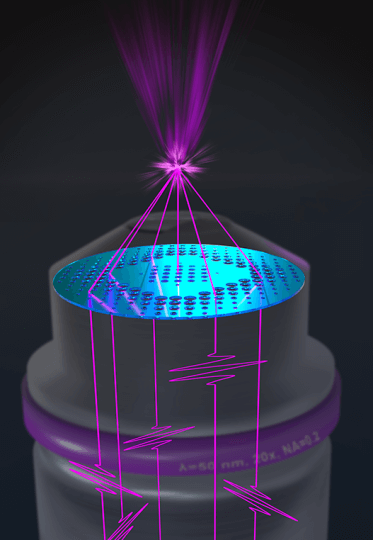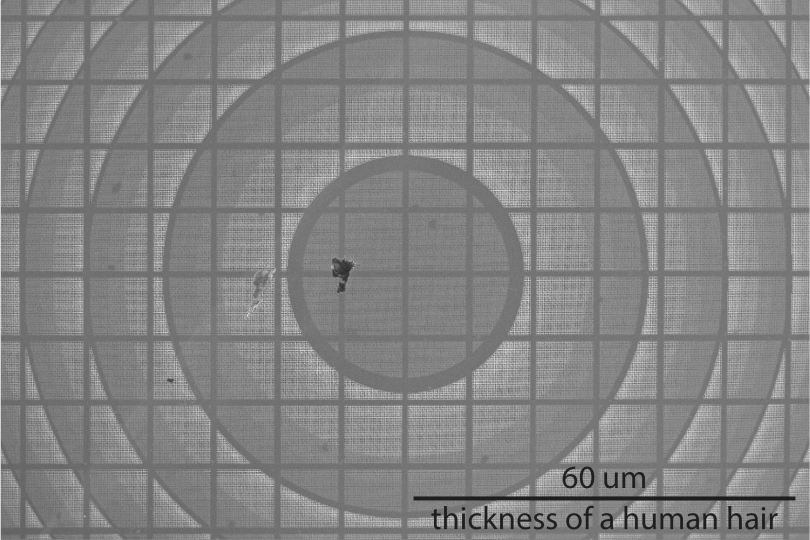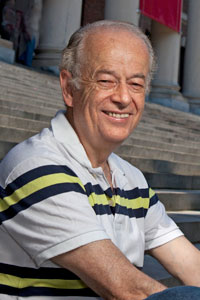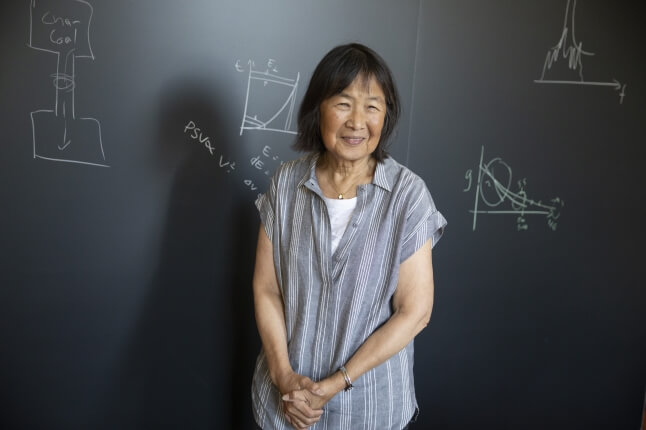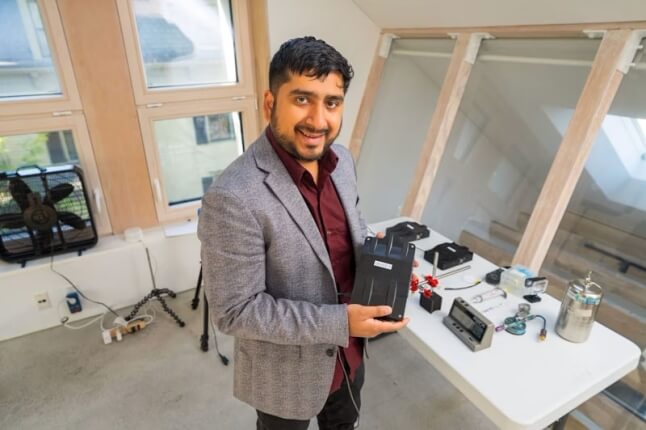News
A new perforated metalens proves it is possible to use nano-optics to focus beams of extreme ultraviolet light (EUV) and could open new doors in microscopy, sensing, holography, and fundamental physics research. The advance is reported in Science.
At the Harvard John A. Paulson School of Engineering and Applied Sciences (SEAS), Federico Capasso’s lab unveiled in 2011 the groundbreaking concept of refracting metasurfaces, or sub-wavelength-spaced arrays of nanostructures, with a Science paper that has since been cited 7,000 times. In 2016, another Science paper reported the use of high-performance flat lenses made up of nanopillars and fabricated using lithography techniques, which unlocked a new strategy to focus light. That work was a major leap forward for conventional optical devices that had historically been fabricated by molding, making them thick and bulky.
Since that initial metalens demonstration, researchers far and wide have been adopting the technique to create metalens designs that exert increasingly complex control over visible and infrared light – but harnessing such metasurfaces to control light in the EUV range has remained out of reach. EUV wavelengths are extremely small, around the 50-nanometer range, which is much smaller than visible wavelengths of light, which are 400 to 700 nanometers in size. At such a small wavelength, EUV is absorbed by all materials, preventing that light from being refracted and controlled by transmissive optics.
The Capasso group’s latest breakthrough – fabricating a metalens that uses nano-sized holes to vacuum-guide EUV -- introduces a game-changing workaround. “This work will revolutionize optics in a spectral region (extreme UV) where, until now, there were no lenses or viable optics for high-performance or high-volume applications,” says Capasso, co-corresponding author, who is the Robert L. Wallace Professor of Applied Physics and Vinton Hayes Senior Research Fellow in Electrical Engineering at SEAS. The new work was in collaboration with Martin Schultze’s lab at Graz University of Technology.
The idea was originally conceived by Marcus Ossiander, a postdoctoral fellow in Capasso’s group, whose background is in attosecond physics, or the study of how light and matter interact on the inconceivably-small timescale of quintillionths of a second. “The only way you can create laser pulses on the attosecond scale is using these very short wavelengths of ultraviolet light,” Ossiander says. “I had this big dream, a bit of a moonshot, really, to create a metalens that could control EUV. And Federico will never stop you from pursuing a dream.”
Typical metalenses rely on the fabrication of nanopillars that – sticking up like the skyscrapers of the Manhattan skyline – refract visible light and focus it in desired ways. But with EUV light being absorbed by all materials it reaches, Ossiander knew that strategy would not work. As he contemplated the way materials interact with light that oscillates incredibly fast, a creative new idea struck him.
“Why not flip the design… to make transmissive pillars… out of air?” he says. By making holes in the surface of a material with a lower refractive index than air itself, he hypothesized that EUV could be guided and focused using the vacuum inside the holes. When computer simulations suggested it might actually work, he teamed up with nanofabrication expert Maryna Leonidivna Meretska, a postdoctoral researcher in Capasso’s lab, to develop a prototype.
“Fabrication, in general, requires a lot of perseverance,” Meretska says. “It took many attempts to realize the working sample. We learned something new about the process with every attempt, and that kept me going.”
“This work really pushed the limits of what’s possible in nanotechnology today,” Capasso says. “We needed impeccable fabrication methods to make this metalens with features small enough to interact with EUV wavelengths, which means the features must be smaller than those wavelengths. It pushed us to shrink the metalens features by a factor of 10 compared to what’s been done before – it was really a very large leap.”
Once the prototype was complete, Ossiander flew to the Institute of Experimental Physics at Graz University of Technology in Austria, one of few labs in the world that can create EUV. There, researchers led by attosecond physicist Martin Schultze (a co-corresponding author on the study) sent EUV radiation through the metalens prototype. After many experiments, the team saw what they had long dreamed of: a small spot, indicating the concentration of light, detected by a special camera.
“Every element [of this project] worked like in an orchestra,” Meretska says. “Both sample fabrication and measurement processes are incredibly challenging and knowing everything worked as designed was very satisfying.”
The breakthrough will have implications for attosecond physics, as the metalens can be used to better understand light and matter interactions on the nanoparticle scale. Capasso says the semiconducting industry will also benefit from EUV metalens technology because it will enable the fabrication of smaller and smaller transistors and processors. But, perhaps most exciting, Capasso says there are likely many future applications that haven’t yet been thought of.
“We don’t currently know all the fields that might benefit from EUV metalenses, because no one expected that this type of technology would be possible anytime soon,” Ossiander says.
Additional authors include Hana Kristin Hampel, Soon Wei Daniel Lim, Nico Knefz, Thomas Jauk.
Harvard’s Office of Technology Development has protected the intellectual property arising from this study and is exploring commercialization opportunities.
Part of this work was performed at Harvard’s Center for Nanoscale Systems (CNS), a member of the National Nanotechnology Coordinated Infrastructure (NNCI), which is supported by the NSF under award no. ECCS-2025158. Computations were run on the FASRC Cannon cluster supported by the FAS Division of Science Research Computing Group at Harvard University. This research was supported by the Alexander von Humboldt Foundation (Feodor-Lynen Fellowship), the Austrian Science Fund (FWF, Start Grant Y1525), the European Union (grant agreement 01076933 EUVORAM), A*STAR Singapore through the National Science Scholarship Scheme, and the Air Force Office of Scientific Research (AFOSR) under award Number FA9550-21-1- 0312.
Topics: Applied Physics, Optics / Photonics, Quantum Engineering
Cutting-edge science delivered direct to your inbox.
Join the Harvard SEAS mailing list.
Scientist Profiles
Federico Capasso
Robert L. Wallace Professor of Applied Physics and Vinton Hayes Senior Research Fellow in Electrical Engineering
Press Contact
Paul Karoff
